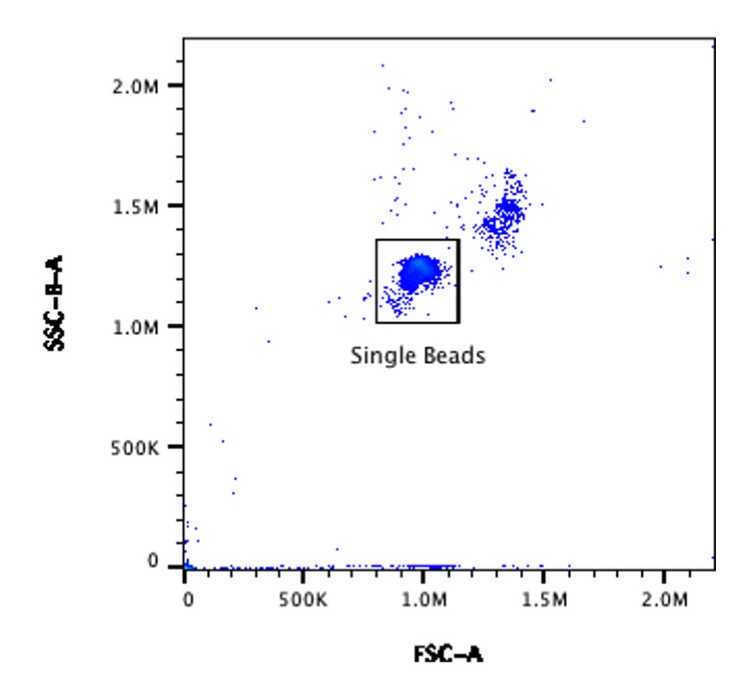Flow Cytometer Fluorescence Voltration for FCMPASS
Joshua A Welsh, Sean M Cook, Jennifer Jones
Abstract
Protocol to perform flow cytometer voltration to identify optimal detector settings for small particle analysis. Data acquired from this protocol are compatible with semi-automated analysis tools built into FCMPASS software.
Steps
Sample preparation
Vortex 0h 0m 5s.
Pipette 500µL of
Add 3 drops of 0h 0m 5s.
Cytometer Setup
Ensure cytometer is clean and that -Height and -Area statistics are set to be collected on all parameters and that all parameters are on.
Create a pseudocolor plot with FSC-A on the X-Axis and (488 nm) B-SSC-A on the Y-Axis and make sure both parameters are being plotted on a linear-scale.
Create a histogram plot with (405 nm) V-SSC-H on the X-Axis and make sure it is plotted on a log-scale.
Set the cytometer triggering threshold to (405 nm) V-SSC-H. All samples should be acquired with the lowest flow rate, typically ~10-15 µL min-1. -1.
Acquire the DPBS tube while viewing the histogram plot from . Adjust the detector gain or trigger threshold until the instrument noise is being acquired at ~1000 events/sec. The instrument noise floor is distinct from detected background events in sheath as it has a sharp increase. In a system with debris there may be a tail that elongates out of this this sharp peak.

Recording this noise is not necessary as this step is identifying optimal settings.
Acquire the 'Beads' tube from . Using the plot from adjust the FSC and B-SSC gain until the single bead population is clearly visible and can be easily gated from the doublet population to the top right of it. Use the Violet SSC trigger settings identified in

Creating a gate around the single bead population named 'Gate 1';
Adjust the stopping criteria of the instrument to record until 10,000 events are acquired on 'Gate 1' drawn in .
Performing Voltration
Voltration can now be performed by recording the 'Beads' tube at multiple fluorescent detector gains, leaving the trigger threshold and light scatter gains consistent. It is recommended that a recording of at least 10 fluorescent detector settings is taken. Including more increments within a voltration will result in being more confident of the subsequent optimal detector settings.Acquisition Template.xlsx
To ensure accurate data analysis, the brightest bead must be visible on at least two of the selected gains.

